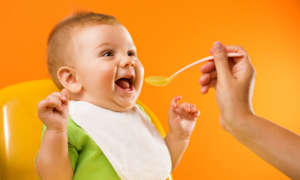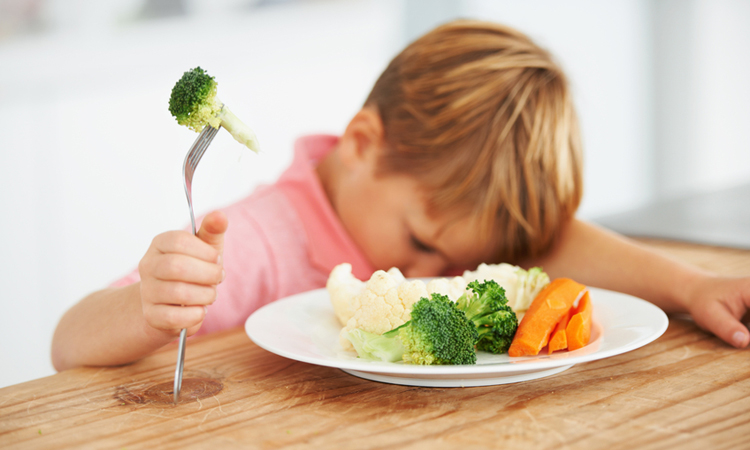“Forcing your kids to eat foods they hate will only lead to resentment and frustration on both ends. I find the best way to get your kids on board with healthy eating is to keep junk food out of the house, and stock the fridge with a variety of options to encourage them to make good dietary choices on their own.”
–Rose Caiola
Strategies to help stressful mealtime scenes with kids
Preschoolers are notorious for being picky eaters. One day ham is yummy; the next it’s yucky. Sandwiches cut into squares are wonderful one day; the next it’s meltdown time because they’re not in triangles. At this age, you can’t control these tendencies. However, there are plenty of strategies you can employ to make mealtimes much more bearable.
Present food in a fun way
 Nutritious food can be more attractive to preschoolers if it’s presented in a fun way. For example, cut up vegetables to look like a picture on the plate or animal shaped items. There are so many creative ways to serve wholesome food. You’ll garner your little one’s interest; that’s for sure.
Nutritious food can be more attractive to preschoolers if it’s presented in a fun way. For example, cut up vegetables to look like a picture on the plate or animal shaped items. There are so many creative ways to serve wholesome food. You’ll garner your little one’s interest; that’s for sure.
Liz Weiss and Janice Bissex, nutritionists and authors of No Whine With Dinner: 150 Healthy, Kid-Tested Recipes From the Meal Makeover Moms, say, “We eat with our eyes.” So if food looks good, a child’s resistance to trying it is lowered.
Be consistent
Consistency with meal times – as with so many other things relating to young children’s development – is really important. A child may have to try something up to 15 times before they like it. The key for parents here is to not give up. If your child doesn’t care for carrots today, then next month they could be sipping carrot soup with gusto. Keep on trying. Every day. Be relentless in your pursuit for healthy eating. It will pay off in the end.
Make little steps each day
 Respect the small steps you make with your children. Don’t worry if they don’t eat it all. Fostering a love of tasting new foods is the main objective. Encourage your child by saying, ‘This is easy – you could be done in a second.’” Reward them with a food they like afterwards. As you move forward, you can increase the amount of the new food for your child each mealtime, and drop the rewards.
Respect the small steps you make with your children. Don’t worry if they don’t eat it all. Fostering a love of tasting new foods is the main objective. Encourage your child by saying, ‘This is easy – you could be done in a second.’” Reward them with a food they like afterwards. As you move forward, you can increase the amount of the new food for your child each mealtime, and drop the rewards.
It’s all about choice
Giving preschoolers a small choice helps them feel in control and encourages sharing. Instead of forcing foods, give them a choice of two or three healthy options – not too many as it will overwhelm them. Whatever choice they make will be healthy, and it avoids battles at dinner time. Decision making is an important skill to introduce to children. It makes them feel more in control of their actions and promotes independent thinking.
Liberal positive reinforcement
 While praising children too much is debatable, liberal positive reinforcement can really work wonders. Motivate little ones after they have tried to eat some healthy food. If their behavior is not ideal, then hold back on the praise. If you have more than one child, a bit of healthy competition can prove useful, by praising the child who has eaten their food. Everyone wants to be the winner!
While praising children too much is debatable, liberal positive reinforcement can really work wonders. Motivate little ones after they have tried to eat some healthy food. If their behavior is not ideal, then hold back on the praise. If you have more than one child, a bit of healthy competition can prove useful, by praising the child who has eaten their food. Everyone wants to be the winner!
Cut back on snacks
This one seems obvious, but sometimes parents are shocked when they count up the snack diary. Remember, preschoolers are still small and don’t need as much as we think. It’s far better for them to be hungry at meal times and therefore more adventurous with their food choices, than not eating the food provided – resulting in waste.
Sneak in the vegetables
 Your preschooler may hate broccoli with a passion when presented in the normal manner, but mash it up with Parmesan, make tasty fritters and the story changes. Get clever with your meal planning. Add in grated vegetables to dishes where you can. Blend up a variety of healthy foods into a soup, and add toast fingers to dip.
Your preschooler may hate broccoli with a passion when presented in the normal manner, but mash it up with Parmesan, make tasty fritters and the story changes. Get clever with your meal planning. Add in grated vegetables to dishes where you can. Blend up a variety of healthy foods into a soup, and add toast fingers to dip.
And remember to partake in some yoga to rewire afterwards!


